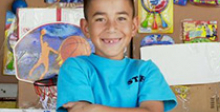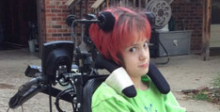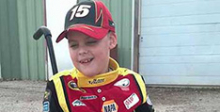
MAXIMIZE
There is evidence that children with cerebral palsy far exceed initial assessments. Children that physicians have once said would never walk have not only put one foot in front of the other, they’ve climbed mountains. Others that were never expected to communicate have spoken, written books, and inspired others with words of wisdom. Even in severe forms of cerebral palsy a child’s potential can materialize making possible the aspirations that parents have for their child’s future.
Helpful questions for this stage of the journey
The routine is set. Basic needs are met. Parents are acclimated to their child’s condition, abilities, and care plan. Now it’s time to dig deeper to take advantage of the potential as parents, and the child’s potential to thrive in the all ways possible. It’s all about making the situation easier by taking advantage of available opportunities, seeking solutions for the items that would make life easier, better. It’s about empowerment and getting the mojo back. Asking for help, and embrace opportunities. Avoid the feeling of having to perform all of these steps to perfection all at once, as this is too heavy of a burden to bare. Instead, when a moment presents, tackle an item on the list knowing every step forward is a wonderful accomplishment as a parent and for a child’s future success. Tackle only the items as you can, when you can. Then, step back and say, “We did it!” It’s a wonderful feeling.
Helpful questions:
- Am I able to manage the emergent health conditions that are most likely to be life-threatening? Are there resources that would help me feel more confident in doing so that I should consult with?
- Am I receiving all the government benefits that are available?
- Have I reached out towards all the community support that would enhance my ability to parent and my child’s ability to grow and thrive?
- Are there any opportunities to offset the financial burdens that occur when managing a chronic health condition? Are there opportunities I haven’t tapped into to save money on nutrition, health insurance, energy assistance, and housing options?
- Have I secured my family’s financial future? Have I planned for all of life’s contingencies if I become incapacitated or have an accident who will care for my child when I’m hospitalized or I pass? Are we prepared?
- Have I tapped into the resources that make it easier to care for my child – home modifications, vehicle modifications, mobility devices, communication devices, feeding options, pain management, seizure control, and more?
- Am I keeping an eye out for research findings, clinical trials, bio-medical discoveries that may apply to my child’s well-being? Have I challenged the doctors to evaluate my child for a chance to improve his or her quality of life – eye tracking, gait and motion analysis, cord blood, brain cell rejuvenation? Suit therapy?
- Am I preparing my child to be an independent, self-sufficient, self-supporting adult? Or, at least to the largest extent possible?
- With all this hard work, have we stopped to ‘smell the roses?’ Are we developing hobbies, activities and interests? Socializing with others? Participating in sport, health and fitness activities? Forming a sense of accomplishment? Having fun and creating great memories?
























